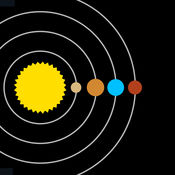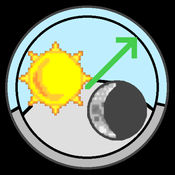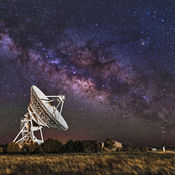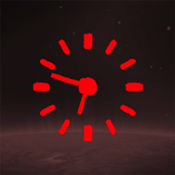-
Category Reference
-
Size 2.9 MB
Largest Solar System Objects supplies you with information on 50 of the Solar Systems Largest Objects in an easy to use, simple, intuitive manner. Simply select the rank (1-50) you need and full details for that object are shown. Couldnt be easier Shows:* Picture (where available) of Object* Object Name* Object Radius (in km)* Object Volume (in km3)* Escape Velocity (in m/s2)Useful for:* Amazing friends with astronomical trivia* Looking up results to see whos right* Quick trivia challenges with friendsEndless fun
Largest Solar System Objects alternatives
Solar Walk Ads+ Explore Space and Planets System
Over 6 million users Featured in Best Apps three years in a row National Parenting Publications Awards (NAPPA) - GOLD winner in the Educational Tools for Parents and Children category A Parents Choice Gold Award Winner Remember building a solar system in high school? Cups and papier-mache balls are in the past, because Solar Walk is an interactive orrery that shows all planets and satellites of the solar system in their correct positions in real time. - NY TimesIMPORTANT: To restore previously made purchases, tap the Restore button in the upper right corner in Extras.MAIN FEATURES:Planets: Sun, Mercury,Venus, Earth, Mars, Jupiter, Saturn, Uranus, Neptune, PlutoMoons: Phobos, Deimos, Callisto, Ganymede, Europa, Io, Hyperion, Iapetus, Titan, Rhea, Dione, Tethys, Enceladus, Mimas, Oberon, Titania, Umbriel, Ariel, Miranda, Triton, Larissa, Proteus, Nereid, CharonDwarf planets and asteroids: Ceres, Makemake, Haumea, Sedna, Eris, ErosComets: Hale-Bopp, Borrelly, Halleys Comet, Ikeya-ZhangMissions and satellites*: Curiosity, Luna 17, Apollo 11, Apollo 17, Hubble Launch, SEASAT, ERBS, ISS, Aqua, Envisat, Suzaku, Daichi, CORONAS-Photon Educational movies*: size comparison, Earths cycles, solar eclipse, moon phases, tidal phenomena, major circles of latitude, zodiacal constellations, Cassini-Huygens mission*Available through In-App Purchase
-
size 419 MB
Astrolabe Clock
Astrolabe Clock is an astronomical clock inspired by the astrolabe, an ancient astronomical instrument used to tell time and to predict the location of the Sun, stars and planets. This modern interpretation gives a view of the sky showing at a glance the time of day, day of year, and the location in the sky of the Sun, Moon, planets and stars. Astrolabe Clock also gives the time of sunrise and sunset, the phase of the Moon, transit times for the Sun, Moon, planets and stars, and can be used to show the occurrence of solar and lunar eclipses.
-
rating 4.81818
-
size 1.6 MB
Live Sky
Live Sky is an Astronomy app for the Star Gazer who wants to quickly look up the live coordinates (Right Ascension, Declination, Altitude and Azimuth) for planets in our Solar system, the Moon, the Sun, 110 Brightest Stars in the sky and 110 Deep Sky Objects (Messier Objects). Easily tell which the bodies that are currently above the horizon (the ones with the green icon), or learn more information about the body by clicking on it. Coming soon:- Locate the object in the sky by pointing your phone at it- Integration with a Weather service to give you viewing conditions
-
rating 4.72727
-
size 43.5 MB
Sky Time
Sky Time is a simple app that displays Astronomy related times, including Julian Date and Universal Time. It also makes use of your devices ability to sense location to determine the Sidereal Time. * Pop-up descriptions of the times at your fingertips.
-
size 1.0 MB




